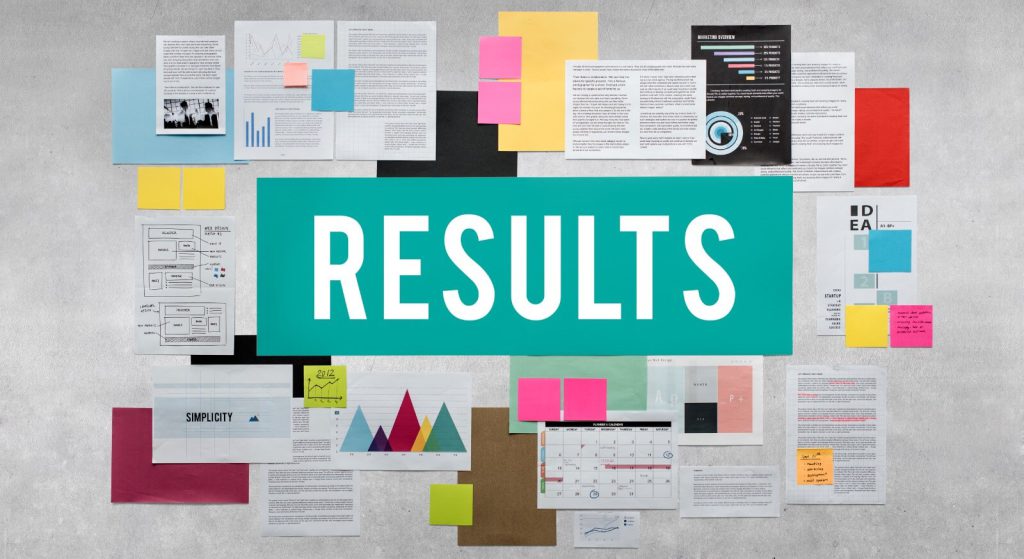There are two ways to do any work in your life. One is just doing your task and does not think about its outcomes. Another way is to think about the outcomes of your desired work and then perform your task. Now, think about how you will get better results in your work in the first way or in the second way.
1. Task —— Outcomes
2. Outcomes ——Task
You should know your outcomes first then you should decide task. The task should not decide your outcomes. Because when you know your desired outcomes there are chances you will give more effort to your task. If you do not know your outcome then there are chances you give up soon.
Find Your Why?
After deciding your outcomes it’s necessary to find your why. Why do you want it? It is very necessary to know why you want anything before what to do or how to do it?
Finding your “why” is a profound and introspective journey that encompasses the search for purpose, meaning, and fulfillment in life. It is an exploration of the core values, passions, and beliefs that drive your actions and decisions. Discovering your “why” provides a compass, guiding you towards a life aligned with your authentic self.

The quest to find your “why” begins with self-reflection. It involves delving into your past experiences, examining your interests, and identifying the activities that ignite a sense of joy and purpose within you. What activities do you lose track of time while engaging in? What makes you feel alive and connected to something greater than yourself? These are the questions that help uncover your unique passions and interests.
However, finding your “why” is not limited to personal interests alone. It extends to the impact you wish to make on the world around you. What kind of contribution do you aspire to make? How do you envision improving the lives of others? Identifying how you want to positively influence the world can shape your sense of purpose and give your life a greater sense of meaning.
Furthermore, introspection and self-discovery are ongoing processes. Your “why” may evolve and change as you grow, gain new experiences, and gain deeper insights into yourself and the world. It is essential to allow yourself the flexibility to adapt and redefine your purpose as needed, nurturing a lifelong journey of self-discovery and personal growth.
Finding your “why” is not always an easy task. It requires courage, vulnerability, and an openness to explore different paths. It may involve stepping out of your comfort zone, taking risks, and challenging societal expectations or norms. It is a process that requires self-compassion and patience, understanding that the journey toward uncovering your purpose is unique to you and may not follow a linear path.
Once you have a clearer understanding of your “why,” it becomes a guiding force in decision-making and goal-setting. Your purpose serves as a lens through which you evaluate opportunities, relationships, and choices. It helps you prioritize your time and energy, ensuring that you invest yourself in endeavors that align with your values and bring you closer to your aspirations.
Finding your “why” also empowers you to overcome obstacles and persevere in the face of challenges. When you have a strong sense of purpose, setbacks become opportunities for growth and learning. You are fueled by an inner drive that propels you forward, even when the path becomes uncertain or difficult.
Ultimately, finding your “why” is a deeply personal and transformative journey. It is about uncovering the essence of who you are, what you stand for, and the impact you want to have on the world. It is a continuous exploration, a lifelong pursuit that invites you to live authentically and with intention.
So, embark on the journey to find your “why” with curiosity, openness, and self-compassion. Embrace the challenges and uncertainties, knowing that each step brings you closer to understanding your purpose. And remember, your “why” is unique to you, and by embracing it, you have the potential to create a life of fulfillment, meaning, and significance.
The best way to find your why is to attach gain or pain to your outcomes. What will the gain when you will get your desired outcomes and what will the pain be if you will not get your desired outcomes. When you attach gain or pain, you actually attach your feelings, and your why becomes more strong.
Structure Your Outcomes
After finding the why, now it’s time to structure your outcomes. There are 9 well-formed conditions to structure it. These are the followings:
1. Positive
Your outcomes should be positive. This means never deciding that you want not to be fat, or you want to be poor. These are negative outcomes. You should say you want to be healthy and want to be rich. These are the positive outcomes.
2. Evidence
Here, evidence means a milestone. That shows you are going in the right direction and how many tasks you did and how many tasks have to do. For example; You are going to a city. How you will get to know whether you are going in the right direction or not and how much distance you covered. The milestones in the journey are the evidence. Same there should be evidence for your outcomes.

Suppose you want to lose 10 kg weight. You lost 2 kg in one month. That’s 2 kg is the milestone in the journey of losing weight. Same there should be evidence because it motivates you to achieve your desired goal.
3. Specifics
Your outcomes should be specific. When you want to achieve, where you want and with whom want. All detailing should be there. Suppose you want a car, then there should be all specifications. Which car you want. what will be the color, its price, with whom you will drive it, from where you will buy it and the main thing when you will buy it.

When setting goals or desired outcomes, it is crucial to be specific. Specific outcomes provide clarity and focus, allowing for a more effective and targeted approach toward achieving them. Here are a few reasons why specificity is important:
Clear Direction: Specific outcomes define exactly what you aim to achieve. They eliminate ambiguity and provide a clear direction, helping you stay on track and avoid distractions. With specific outcomes, you have a precise target to work towards.
Measurement and Evaluation: Specific outcomes are measurable. They allow you to track progress and evaluate success. By defining specific metrics or criteria for measuring your progress, you can assess how close you are to achieving the desired outcome and make adjustments if necessary.
Motivation and Commitment: Specific outcomes enhance motivation and commitment. When you have a clear, well-defined objective, it becomes easier to visualize success and remain motivated. Clear outcomes also foster a sense of accountability and dedication, as you can more easily monitor your progress toward achieving them.
Effective planning and resource allocation: Specific outcomes enable effective planning and resource allocation. When you have a specific target, you can identify the necessary steps, resources, and strategies required to reach that outcome. This helps optimize your efforts and ensures that resources are allocated efficiently.
Enhanced problem-solving: Specific outcomes facilitate problem-solving. When faced with challenges or obstacles, having a specific outcome in mind allows you to focus on finding solutions that directly address the barriers hindering your progress. It enables you to devise targeted strategies and overcome hurdles more effectively.
By setting specific outcomes, you create a clear roadmap for success. Specificity provides the necessary details and parameters that guide your actions, measure progress, and maintain motivation. Remember to make your outcomes specific, measurable, achievable, relevant, and time-bound (SMART) to maximize your chances of success.
4. Resources
Here, resources means objects, people, role models, personal qualities, mentors, money, and other objects that you will require for the desired results.

Here are some examples of resources that can contribute to success:
Objects: Physical resources such as tools, equipment, technology, and materials play a crucial role in various endeavors. These resources can range from simple items like pens and paper to complex machinery or software necessary for specific tasks.
People: Human resources are invaluable in achieving desired outcomes. Collaborators, colleagues, team members, and mentors provide diverse perspectives, expertise, and support. They can contribute skills, knowledge, and experience that complement your own, fostering growth, learning, and collaboration.
Role models: Having role models or inspirational figures can provide guidance, inspiration, and motivation. Role models can be individuals within your field of interest or even historical figures who have achieved success in a similar area. Observing their journey, learning from their experiences, and emulating their positive qualities can help you strive for better results.
Personal qualities: Your own personal qualities and attributes are essential resources. Traits such as perseverance, resilience, adaptability, creativity, and problem-solving skills contribute to overcoming challenges and achieving desired outcomes. Developing and nurturing these qualities can enhance your effectiveness in pursuing your goals.
Mentors: Mentors are experienced individuals who provide guidance, advice, and support based on their expertise and insights. They can offer valuable feedback, share knowledge, and help you navigate challenges. Having a mentor can accelerate your learning, provide valuable perspectives, and broaden your network.
Financial resources: Money and financial resources are often essential in certain endeavors. They can enable investment in research, development, marketing, or acquiring necessary tools and resources. Financial resources can help remove barriers and provide opportunities for achieving desired outcomes.
It’s important to recognize that the availability and utilization of resources may vary depending on the specific context, goals, and circumstances. Identifying the resources you require and leveraging them effectively can significantly contribute to attaining the desired results in your chosen field or endeavor.
5. Control
You should have control over your task. You should not depend on anyone. Having control over your tasks is a vital aspect of productivity, efficiency, and personal satisfaction. When you have a sense of control, you feel empowered and motivated to take charge of your responsibilities. It allows you to shape your work environment and determine the direction and pace of your tasks.

With control over your tasks, you can prioritize effectively. You can assess the importance and urgency of each task, enabling you to allocate your time and energy accordingly. This prevents a sense of overwhelm and ensures that you focus on the most critical and meaningful tasks.
Moreover, having control over your tasks allows you to utilize your strengths and work in a manner that suits your preferences. You can leverage your skills and abilities, leading to higher-quality outputs and increased job satisfaction. Whether it involves choosing the tools and methods that work best for you or structuring your workflow in a way that optimizes your productivity, having control enables you to tailor your approach to align with your strengths and work style.
Additionally, control over your tasks fosters a greater sense of ownership and accountability. When you have autonomy, you become personally invested in the outcomes. This drives intrinsic motivation and a commitment to delivering excellent results. You take responsibility for your work, which enhances your sense of accomplishment and professional growth.
Overall, having control over your tasks empowers you to be proactive, efficient, and engaged. It enables you to shape your work experience and create an environment conducive to success. By taking ownership of your tasks, you can optimize your productivity, leverage your strengths, and experience a greater sense of fulfillment in your professional endeavors.
6. Ecology
There are two types of ecology; internal ecology and external ecology.
The concept of the “ecology of work” emphasizes the interconnectedness and interdependencies within the work environment to optimize productivity and achieve better outcomes. Just as ecological systems thrive on balance and harmony, fostering a healthy ecology of work can enhance employee well-being, collaboration, and overall performance.

Creating an ecology of work involves various factors. Firstly, it requires designing workspaces and organizational structures that promote collaboration, communication, and flexibility. Providing spaces that facilitate interaction, sharing of ideas, and teamwork encourages a vibrant and productive work environment.
Secondly, nurturing a positive and inclusive workplace culture is crucial. This involves promoting diversity, fostering respect, and valuing the contributions of each team member. An inclusive culture enables people to bring their unique perspectives and skills to the table, leading to greater creativity, innovation, and problem-solving capabilities.
Furthermore, the ecology of work emphasizes work-life balance and employee well-being. Organizations that prioritize the physical, mental, and emotional health of their employees tend to experience higher job satisfaction, engagement, and productivity. Implementing policies and practices that support work-life balance, provide opportunities for personal growth, and promote a healthy work environment contributes to better outcomes.
Additionally, fostering a learning and growth mindset is an integral part of the ecology of work. Encouraging continuous learning, skill development, and knowledge sharing creates a dynamic work ecosystem. When employees have opportunities to expand their expertise, they feel more engaged, motivated, and capable of delivering high-quality outcomes.
By recognizing the interconnectedness of various elements within the work environment, organizations can cultivate an ecology of work that maximizes individual and collective potential. When employees are supported, valued, and provided with the necessary resources, the resulting synergy can lead to increased productivity, innovation, and overall success.
Embracing the ecology of work can help organizations thrive in a rapidly evolving and complex professional landscape while promoting the well-being and growth of their employees.
7. Identity
Identity is a must to get the desired result. Establishing a clear identity is crucial for achieving desired results. Identity provides a sense of self-awareness, purpose, and direction, which in turn influences our thoughts, actions, and decision-making processes.

Here are a few reasons why identity is essential in attaining desired outcomes:
Clarity of purpose: Having a strong sense of identity helps clarify your purpose and align your goals with your values, passions, and aspirations. When you have a clear understanding of who you are and what you stand for, it becomes easier to define your objectives and make choices that are in harmony with your identity.
Motivation and perseverance: Identity acts as a source of motivation and determination. When you have a strong sense of who you are and what you want to achieve, you are more likely to stay committed and persevere through challenges and setbacks. Your identity provides a driving force that keeps you focused and dedicated to reaching your desired outcome.
Authenticity and congruence: An authentic identity allows you to act in alignment with your true self. When your actions and behaviors are congruent with your identity, you are more likely to attract opportunities, build meaningful relationships, and create a positive impact. Authenticity breeds trust and credibility, which are essential factors in achieving desired results.
Decision-making and prioritization: Identity helps in decision-making by providing a framework to evaluate choices. When you are aware of your identity, you can assess whether a particular decision aligns with your values, goals, and long-term vision. This helps in prioritizing tasks and opportunities that are in line with your desired outcome.
Resilience and adaptability: An established identity provides a foundation of resilience and adaptability. When faced with unexpected changes or obstacles, a strong sense of self allows you to navigate through challenges, adjust your approach if needed, and maintain focus on your desired result. It enables you to bounce back from setbacks and embrace opportunities for growth and improvement.
8. Chunk Down
If your goal is large then chunk down it into small goals. Suppose you want to lose 20 kg weight or want to wake up at 5 o’clock. Then chunk down it into small goals. First, you will lose 2 kg then 4, and so on. That’s how your target will become achievable.

Chunking down larger goals into smaller goals is an effective strategy to increase clarity, maintain motivation, and facilitate progress. Breaking down a big goal into manageable tasks provides a roadmap and makes the overall objective less overwhelming.
Here are a few steps to effectively chunk down larger goals:
Define the larger goal: Start by clearly articulating the ultimate objective or outcome you wish to achieve. This could be completing a project, learning a new skill, or accomplishing a milestone.
Identify major milestones: Break down the larger goal into significant milestones or key steps that need to be accomplished along the way. These milestones represent significant progress points and serve as anchor points for your journey.
Break milestones into smaller tasks: For each milestone, identify the specific tasks or actions required to reach that milestone. These tasks should be small, actionable, and measurable. They should also be sequential, building upon one another to make steady progress.
Set deadlines: Assign realistic deadlines to each smaller task. Having specific deadlines creates a sense of urgency and helps maintain momentum.
Prioritize and sequence: Determine the order and priority of the smaller tasks. Some tasks may depend on others or have dependencies, so it’s essential to identify the logical sequence in which they should be completed.
Focus on one task at a time: Once you have your smaller tasks defined and prioritized, concentrate on completing them one at a time. This prevents feeling overwhelmed and allows you to devote your full attention and energy to each task.
Celebrate achievements: Acknowledge and celebrate your progress as you complete each smaller task or milestone. Celebrating milestones reinforces a sense of accomplishment and boosts motivation for tackling the next set of tasks.
By chunking down larger goals into smaller, actionable tasks, you create a clear roadmap and build a sense of momentum as you progress through each task. This approach helps you stay focused, maintain motivation, and ultimately achieve your larger goal.
9. Action Plan
To achieve your desired result you need action. Plan an action that what you want to do next. Take a first step towards your goal and plan the next steps.

Achieving better results in your work requires a combination of strategic planning, focused execution, continuous learning, and a positive mindset. By setting clear goals, prioritizing effectively, and embracing innovation, you can optimize your performance and attain exceptional outcomes.
Remember to foster strong relationships, manage your time and energy wisely, and stay motivated throughout your journey. With these strategies in place, you’ll be well-equipped to elevate your work and experience the satisfaction of achieving outstanding results.
Love,
Saurabh Goel
Read more on NLP
Saurabh Goel
He is the Founder and CEO of the Training and Counselling Company ‘Brain Soul & You’. He is an NLP Wellness Coach, Life Coach, Brain analyst, and Trainer for Education, Corporate, and Entrepreneurship. For more than 7 years, he delivered presentations on entrepreneurship, mind programming, and motivation. He did his B.tech in IT and later choose to be a successful psychologist. He is helping people in various ways through his counseling and training sessions.


